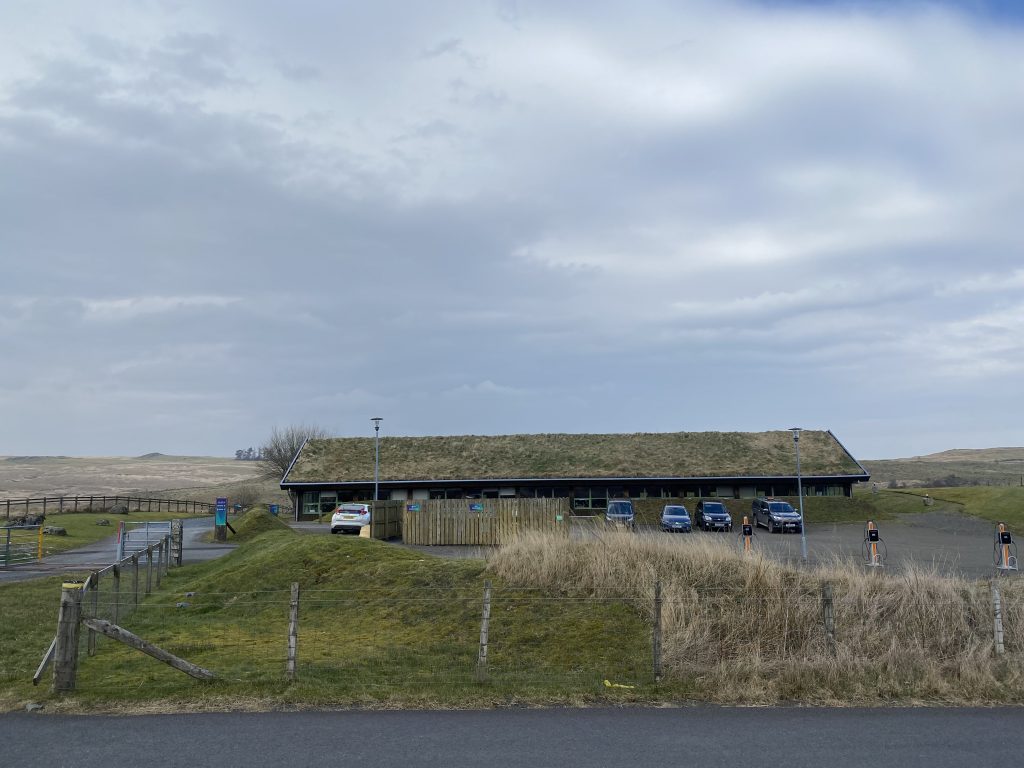6.23 miles 3h 26m ascent 228m
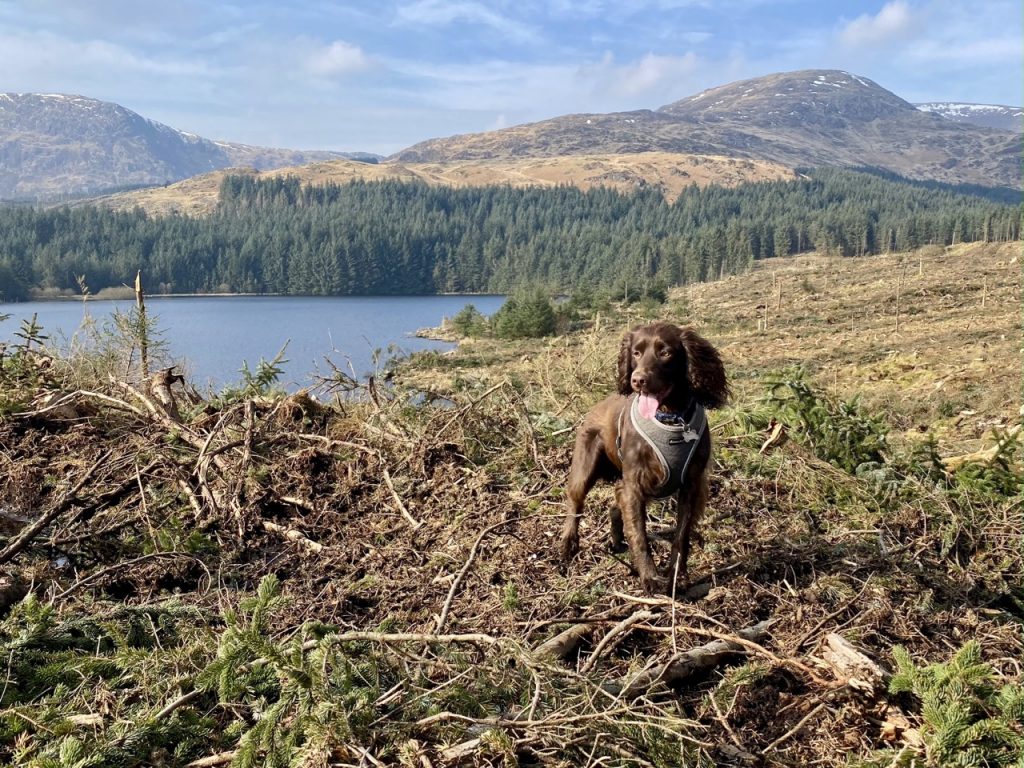
Prof Hans Heiberg Rd-Malcolm Mitchell Rd-Charlie Tyeson Rd-Malcolm Mitchell Rd, Prof Hans Heiberg Rd-Ghost Hole
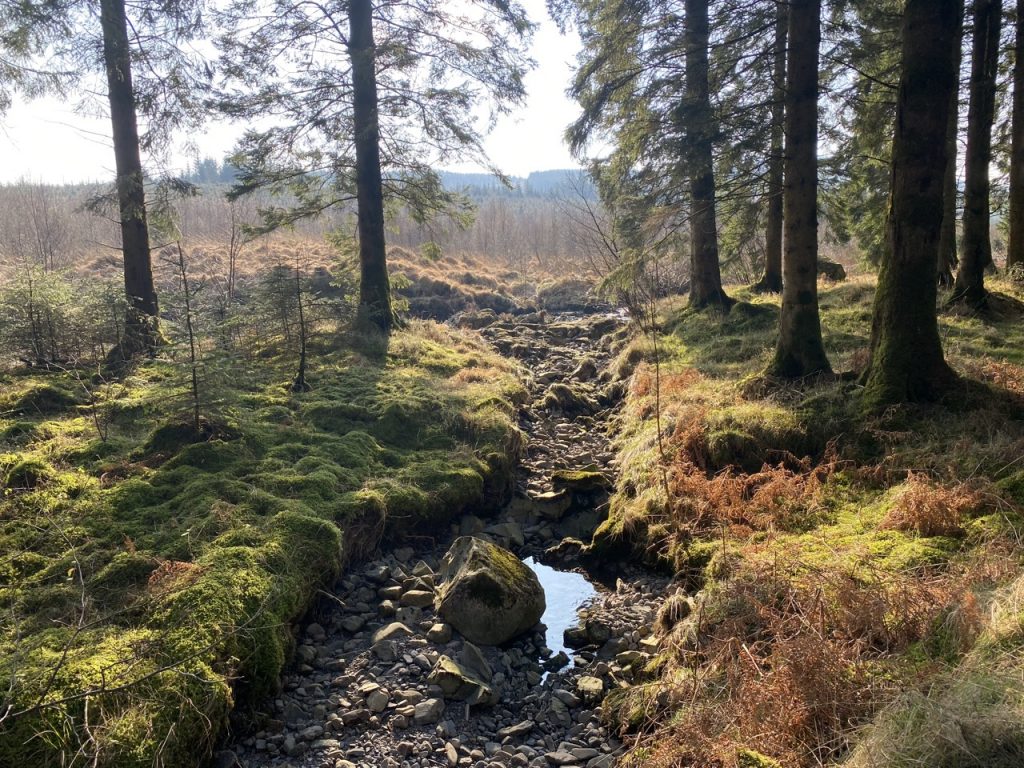
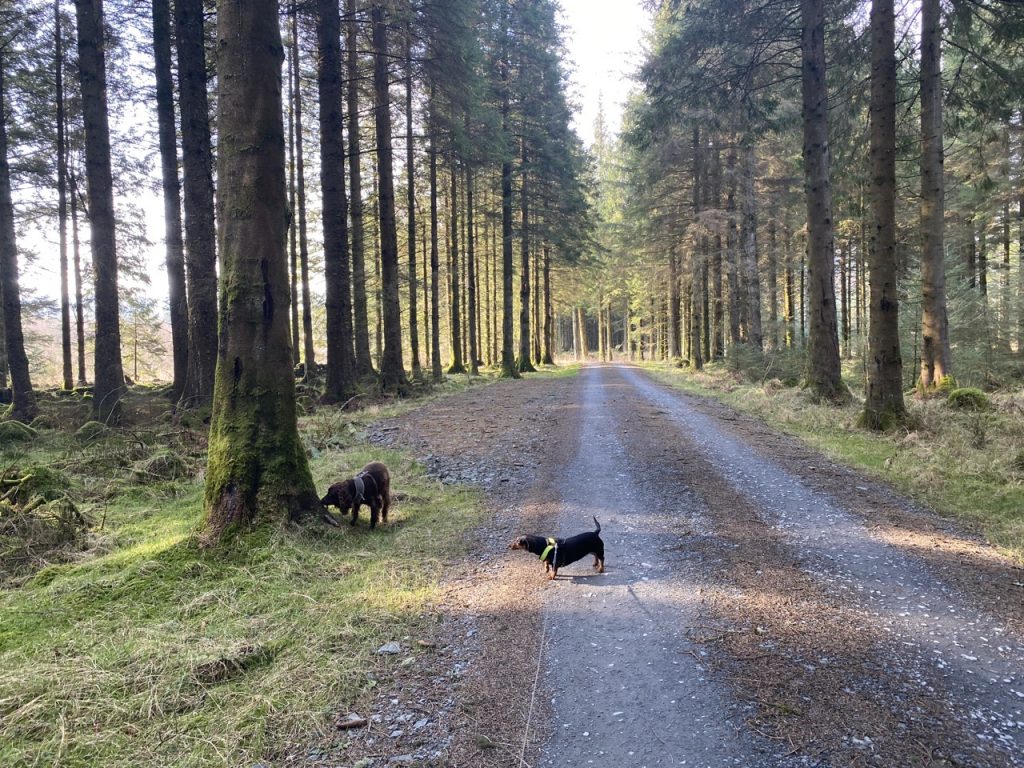
On the fairest of glens
I will look down with pride
My heart’s at the Forrest
And there it shall bide.
Forrest Estate looks very much like a Highland estate but it is actually in the Southern Uplands. It is owned by the Fred Olsen company and its forestry tracks are named after famous Norwegians. So on leaving the car park we found ourselves striding along the tree lined Professor Hans Heiberg Road. I am not certain which of the many Hans Heibergs this is named for, but my money is on Hans Herman Hjortdahl Heiberg (1904-2000) a Norwegian forester and botanist.
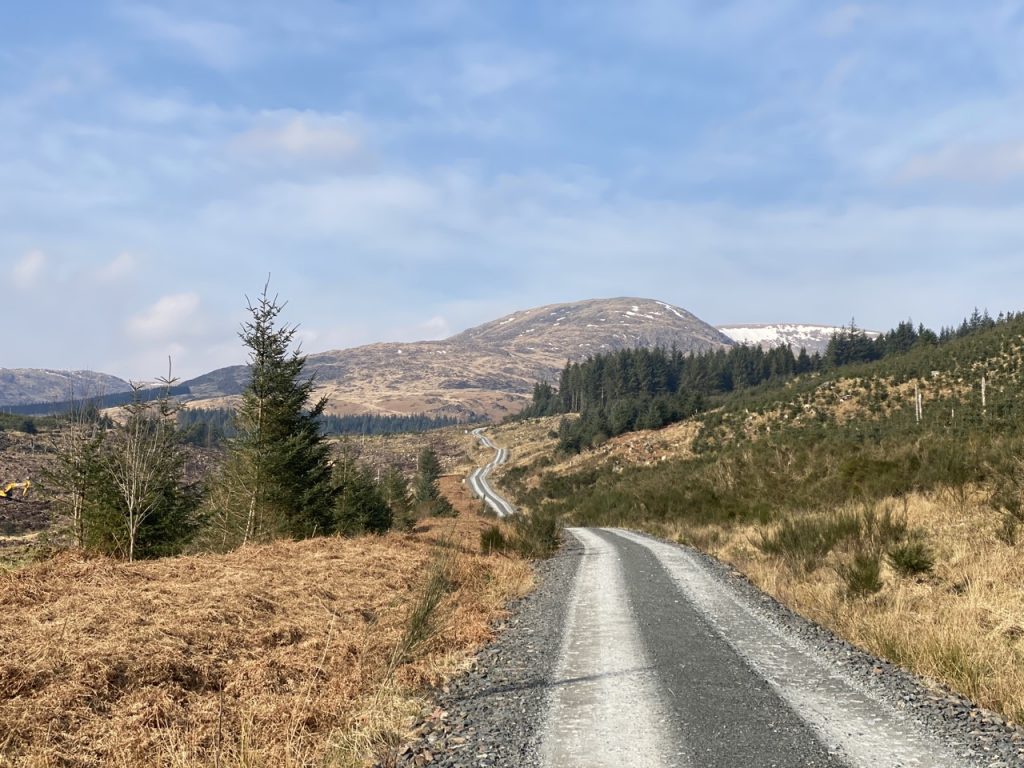
A sign told us we were on the hillwalking route to Meikle Millyea and it was visible before too long. It takes its name from the Scots meikle, large, and Gaelic meall liath, grey lump, though grey is not a particularly obvious distinguishing feature for these hills. As we walked on we joined Malcolm Mitchell Road and walked through felled forest with Corserine, the Rinns’ highest top ahead of us.
The picture below of Loch Minnoch, the middle lake, was taken from a rise beside the track and as you can see it has the unpleasant terrain of recently felled woodland. The rocky hills to the left are Milldown and Millfire with Corserine’s North Gairy to the right. The place to the left of the yellow brown area behind the trees is Haggis Hawse. The OS name book says it was “not known in the locality how it got the name.”
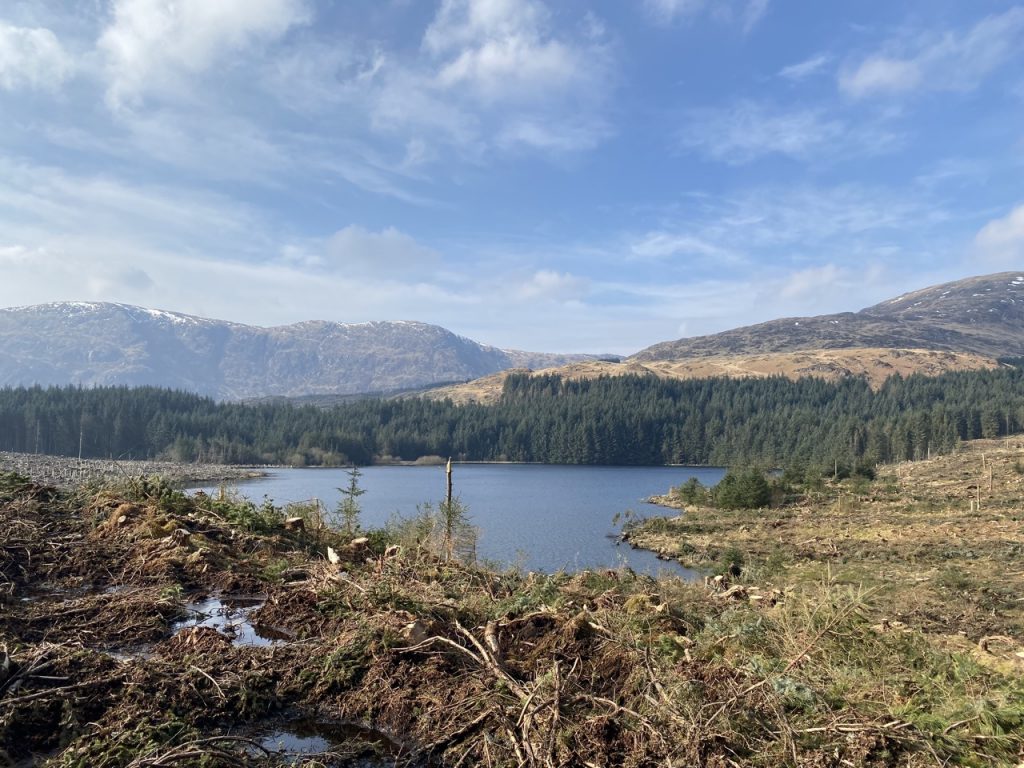
Following the forestry track took us around Bennan Hill, perhaps 40m below and 200m away from its summit. But that 200m was very recently felled with a strong scent of cut pine and stacks of logs.
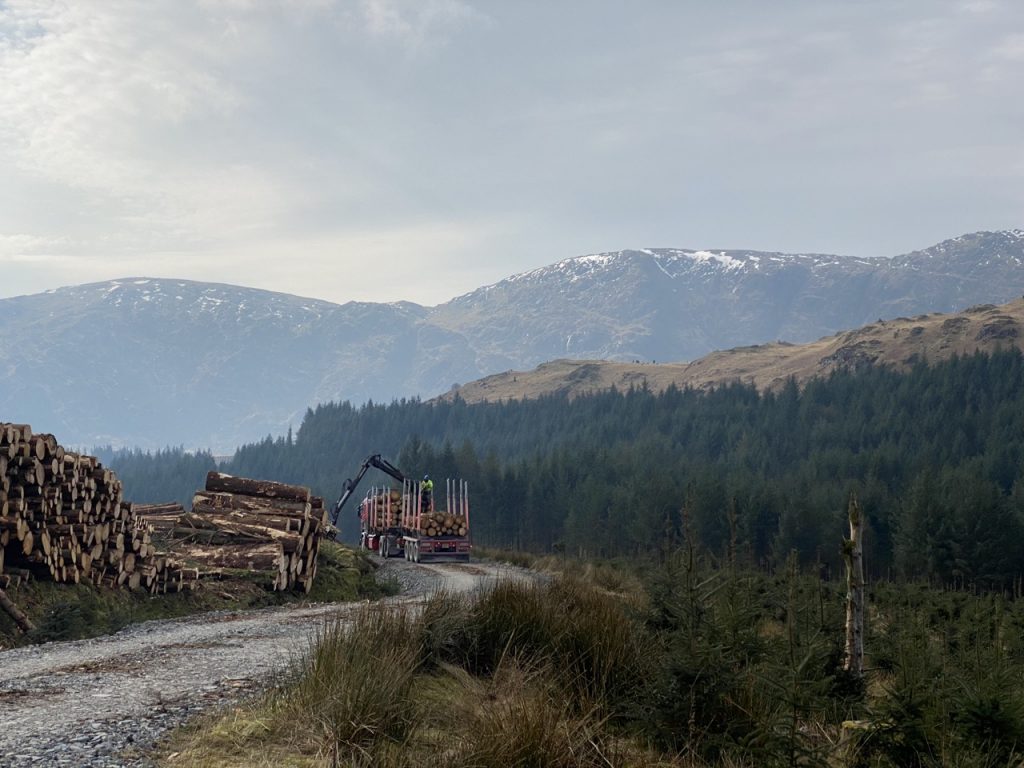
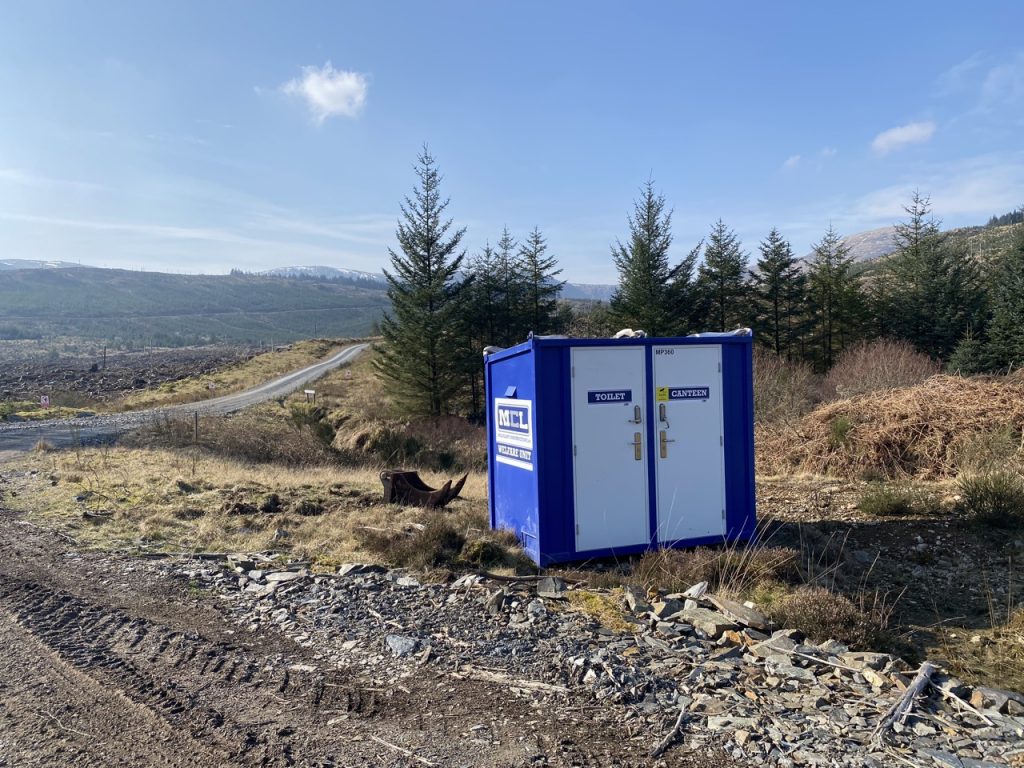
The route was deserted except for a couple of passing logging lorries but one lorry that was still being loaded. We waited to see if the chap loading the logs was going to take a break or wave us when it was alright to pass. But that didn’t happen. So we left the track, took to the wild hillside and picked our way through tussocks and fallen branches giving the lorry a wide berth.
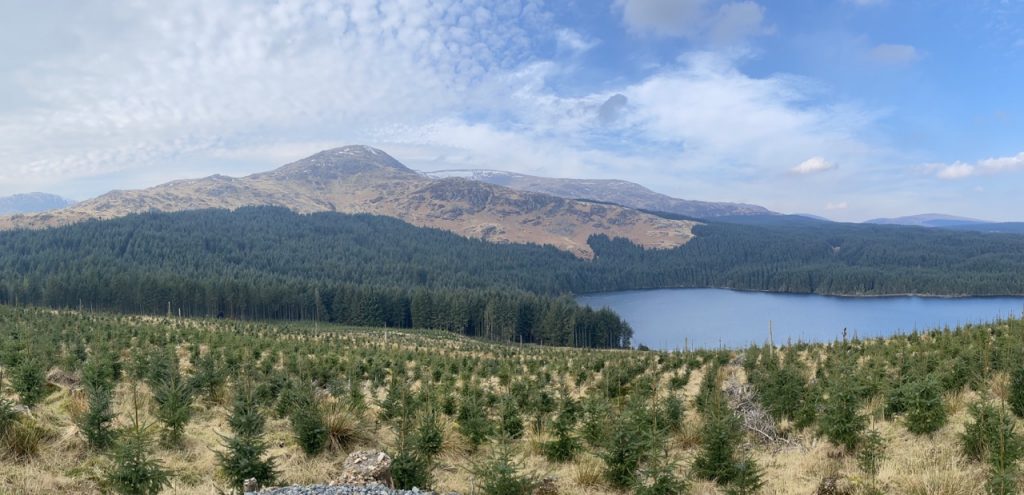
Beyond the logs we had some great views of Corserine and the more northern hills of the ridge as well as Loch Harrow. The slopes here have been re-planted so the view will be lost in a few years.
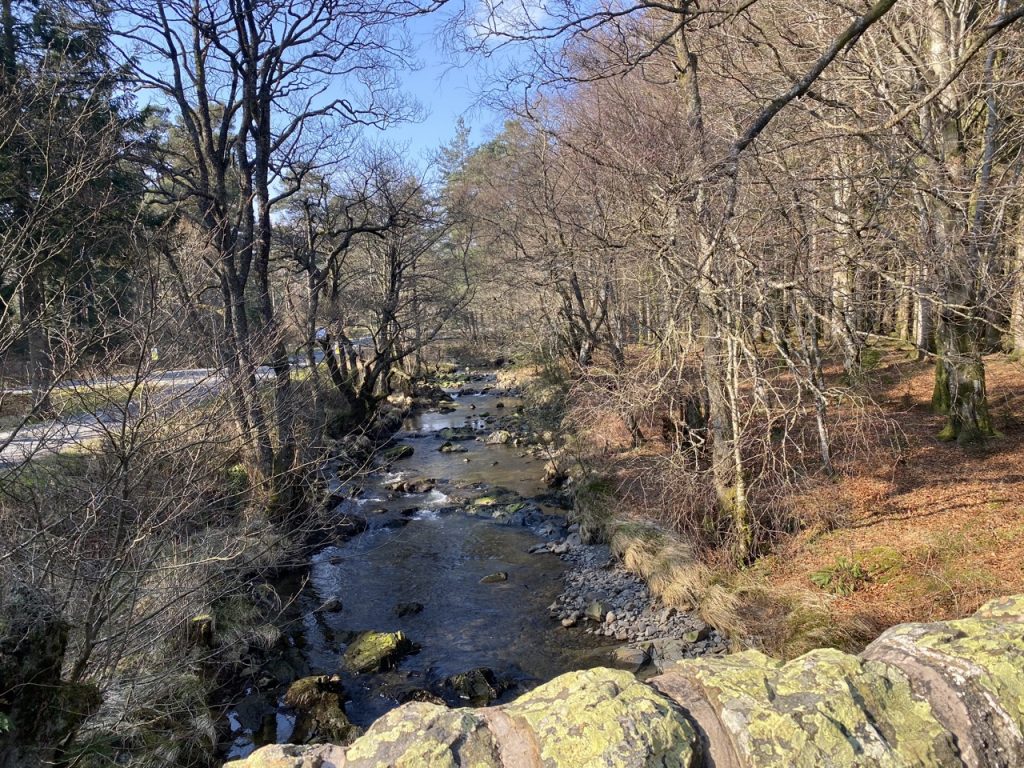
We came back to the car park and after a brief trek over Forrest Bridge to see the statue we ate lunch at a picnic bench. An unaccostumed luxury.
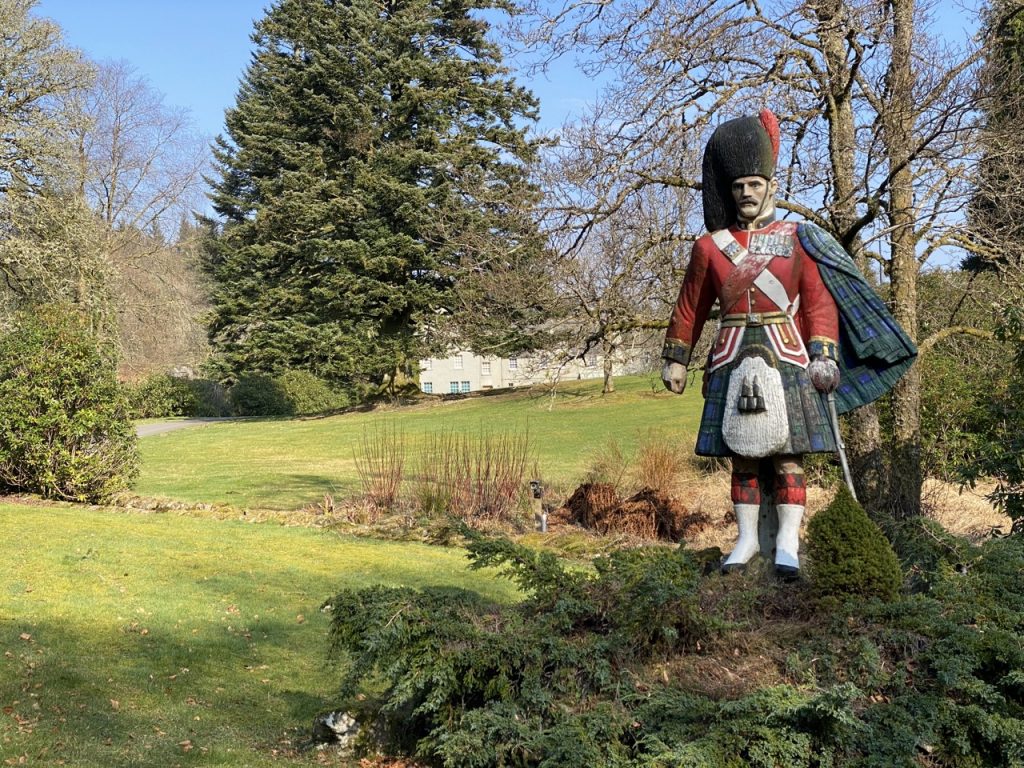
The statue is a ship’s figurehead, of Fred Olsen’s ship Black Watch that entered service on the Newcastle-Oslo route in 1939. With the outbreak of war it was laid up, and later commandeered by the Kreigsmarine. It was sunk in a Fleet Air Arm bombing raid, two days before hostilities ended, on May 5th 1945 and remained at the bottom of the fjord until a salvage company recovered the ship for scrap in 1963. The the figurehead was returned to Fred Olsen.
A monument to Robert McLellan Watson stands on the triangle of grass between the three bridges.
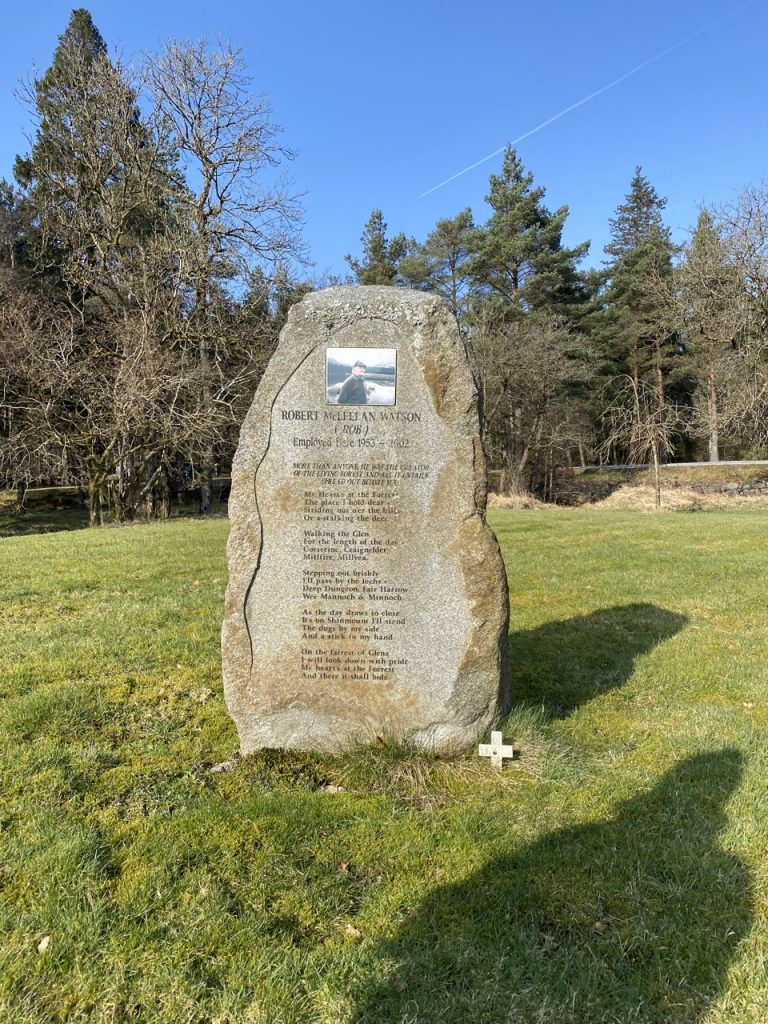
My heart’s at the Forrest
Robert McLellan Watson memorial
The place I hold dear.
Striding out o’er the hills
Or a’stalking the deer.
Walking the glen
For the length of the day
Corserine, Craignelder,
Millfire, Millyea.
Stepping out briskly
I’ll pass by the lochs
Deep Dungeon, Fair Harrow,
Wee Mannoch & Minnoch
As the day draws to close
It’s on Shinmount I’ll stand
The dugs by my side
And a stick in my hand
On the fairest of glens
I will look down with pride
My heart’s at the Forrest
And there it shall bide.
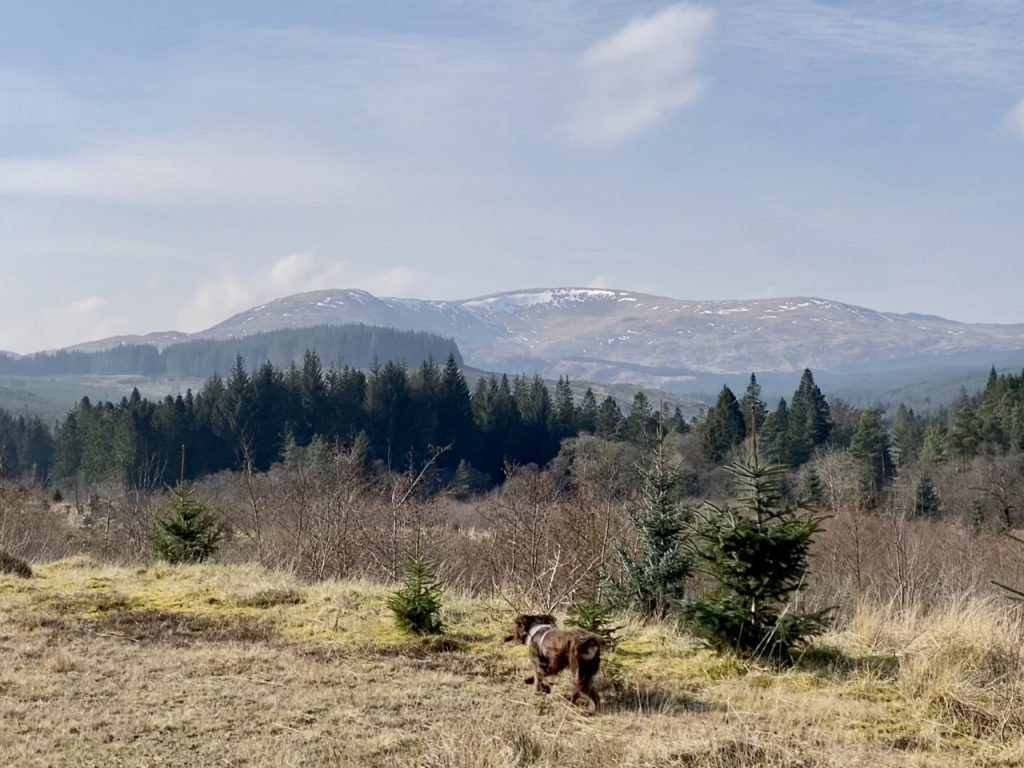
After lunch we crossed the burn on the old Burnhead Bridge, unconcerned by the warning “No Heavy Vehicles”. I had expected to find a track immediately on our right but didn’t see it so we walked along the road (really a vehicle track) until we found another track. This is marked on the estate map as “Ghost Hole”. It seemed long unused with shrubs thigh-high in the middle. We spent a while examining these and some saplings growing nearby which looked to be the same plant. They were, I think, young larch but all had a distinctive colouring to their stems that I didn’t recall seeing before. A little online research suggests it is larch. I am not used to looking at young specimens. Nor have I seen it growing like a shrub before.
UPDATE: I contacted the Estate to ask about the name “Ghost Hole” and its origin. They didn’t know but did asked about and were told it ‘Aye bin’.
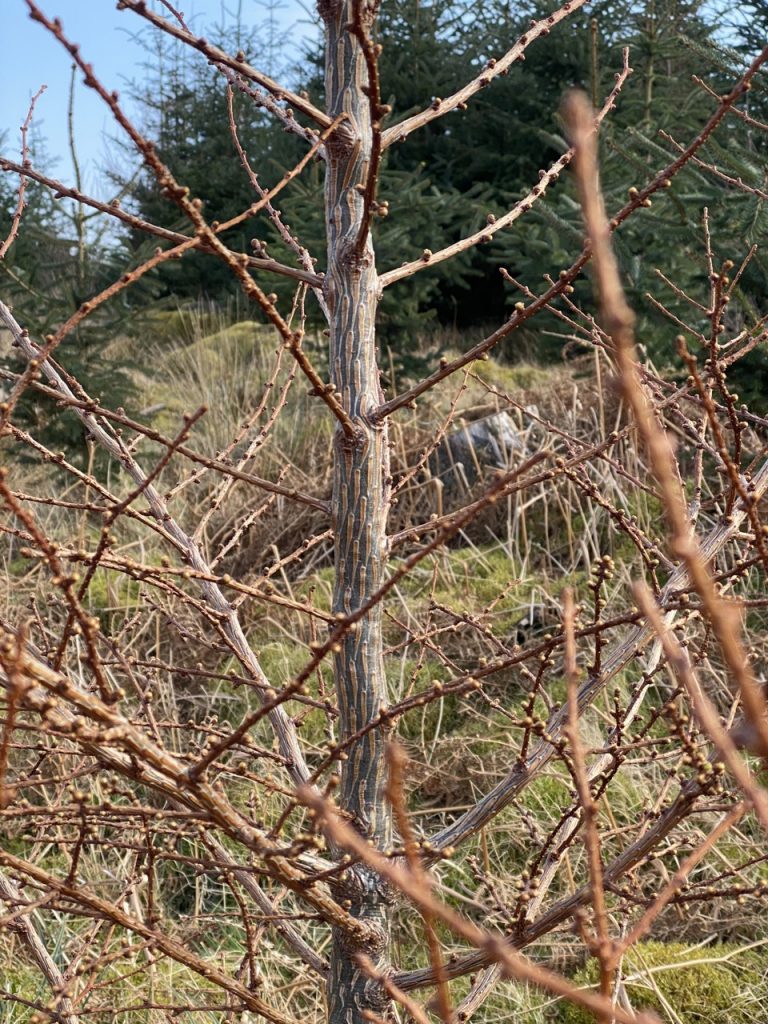
There were excellent views of the Rinns of Kells, much as we had had throughout the day. It was a little strange that seemed larger when we were further away. Something akin to the moon illusion, I imagine.
The Ghost Hole track took us about as far as the buildings near Burnhead but there was neither bridge nor easy crossing of the Burnhead Burn so we came back the way we went. I cheated a little and used the GPS to find where the lost track down to the bridge was supposed to be. Had I not done that I don’t think I would have noticed it. I wouldn’t consider it a track anymore. It has been almost erased by the forest.
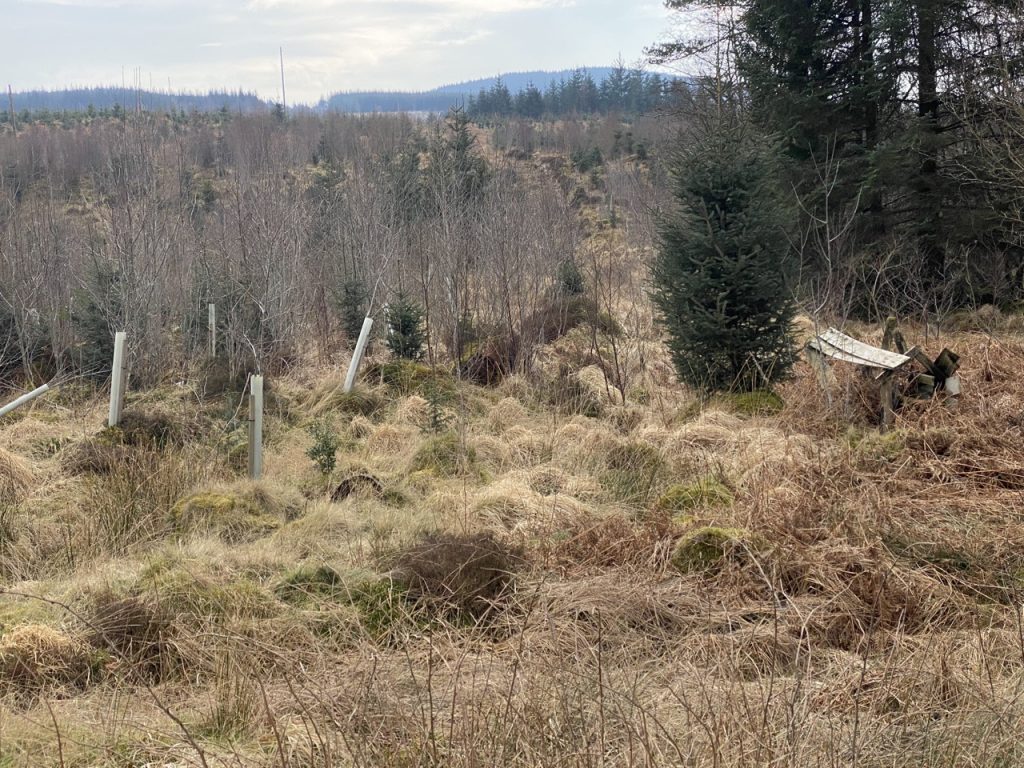
Forrest Estate has been involved in hydro-electric power production from its hill lochs since the 1980’s, and now has four generating stations. We drove past the ‘Green House’, Natural Power’s grass roofed headquarters on our way out.
